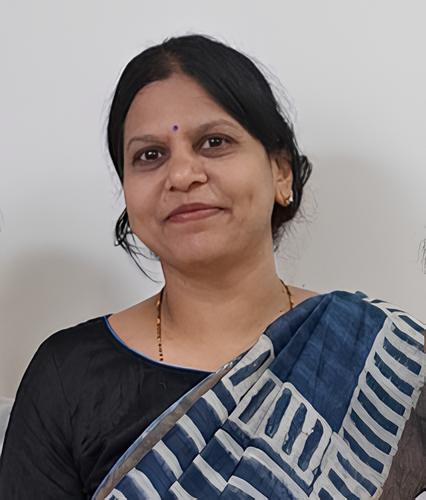
Rashmi Rajashekhar
Dr D.Y. Patil Medical College, Hospital & Research Centre, IndiaPresentation Title:
A study of the bacterial profile and antibiotic susceptibility pattern of Chronic Otitis Media (COM) at a tertiary care centre in Maharashtra
Abstract
Objectives:
1. To study the bacterial profile of Chronic otitis media.
2. To study the the antibiotic susceptibility pattern of the isolates.
3. To study the distribution of Chronic otitis media with regards to age and gender.
Methods:
A cross sectional microbiological study was conducted in the department of Otorhinolaryngology of Dr D.Y. Patil Medical College, Hospital and Research Centre, Pimpri, Pune. By convenience, 30 samples were collected from patients with active chronic otitis media coming to the ENT OPD of the hospital based on the following inclusion and exclusion criteria: Inclusion criteria: 1. Patients between the ages of 5 to 55 years. 2. Patients diagnosed with active chronic otitis media, either squamosal or mucosal type. Exclusion criteria: 1. Patients treated with antibiotics in the past 15 days. 2. Patients with otitis externa (intact tympanic membrane). 3. Patients with otomycosis. After taking informed consent of the patient a thorough history was noted which included basic demographic data and clinical details following which an otoscopic examination was done. A single sample was taken from the discharging ear with a sterile cotton swab under aseptic precautions. The swab was then immediately transported to the Microbiology lab for processing. The methods employed to identify the bacteria in the microbiology lab included gram staining, culturing on blood and McConkey agar and biochemical testing. Following identification, the culture growth underwent antibiotic susceptibility testing using the Kirby Baeur disc diffusion method results of which were interpreted according to the CLSI guidelines. The data obtained from all the methods was then carefully compiled.
Results:
It was found that out of 30 patients majority belonged in the age group of 16-25 years ( 36.66 %) and 26-35 years (16.67 %) while only 10% of the patients were in the age group of 5-15 years. The age group ranged from 8 to 55 years and mean age of the study subjects was 27 years.
The bacteriological analysis of the samples yielded two types of causative organisms. Pseudomonas aeruginosa was isolated in 24 samples (80%) whereas Staphylococcus aureus was found in the remaining 6 samples (20%).
For P. aeruginosa Ceftazidime and Piperacillin-tazobactem were acting successfully with >90 % of the isolates showing sensitivity. Next to them Cefepime, Cefoperazone and Tobramycin were the most effective but with only 40-50 % isolates having sensitivity. Ciprofloxacin, a commonly used antibiotic to which 50% of the isolates were sensitive still showed an overall unsatisfactory result as many resistant gaps were seen with 48.2% isolates having resistance and 1.2% showing intermediate sensitivity. Even the last resort of drugs like Amikacin and Meropenem used against P. aeruginosa alarmingly showed a few resistance pockets.
Conclusion: Almost all the predisposing factors of COM can be found in the Indian context making it a highly prevalent disease which if failed to treat timely can lead to severe complications. This study analysed ear swabs of 30 patients diagnosed with Chronic Otitis Media. According to the results, Pseudomonas aeruginosa is the most common microorganism responsible followed by Staphylococcus aureus. Most effective antibiotic noted against P. aeruginosa is Piperacillin-tazobactem, Ceftazidime and Meropenem whereas for S. aureus Teicoplanin, Vancomycin, Linezolid and Cotrimoxazole showed superiority. Both organisms isolated showed the most resistance against Ciprofloxacin which is a commonly used antibiotic.
Biography
Dr. Rashmi P. Rajashekhar is a highly accomplished ENT specialist and educator with over a decade of experience. She is a dedicated member of several prestigious professional organizations, including the Indian Academy of Otorhinolaryngologists and the All India Otolaryngologists of India. She has co-authored chapters in major medical textbooks and has been recognized for her academic contributions, particularly in the field of otorhinolaryngology and medical education.
Dr. Rajashekhar has presented numerous papers at national and international conferences, including topics on innovative surgical techniques and medical education. She has chaired various sessions and served as a guest speaker at multiple conferences, including the SEOCON 2023 and the International Webinar on Otorhinolaryngology in Paris.
She has been honored for her contributions during the COVID-19 pandemic and has organized workshops and training programs for medical professionals. As a PhD candidate at Dr. D.Y. Patil University, her research focuses on the efficacy of middle ear risk indices in predicting tympanoplasty outcomes.
In addition to her academic and clinical expertise, Dr. Rajashekhar is deeply committed to community service, conducting free ENT camps in underserved areas of Karnataka for the past seven years. Her professional work has earned her several accolades, including recognition in the Asia Pacific Who’s Who.


